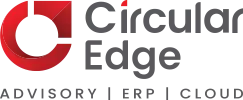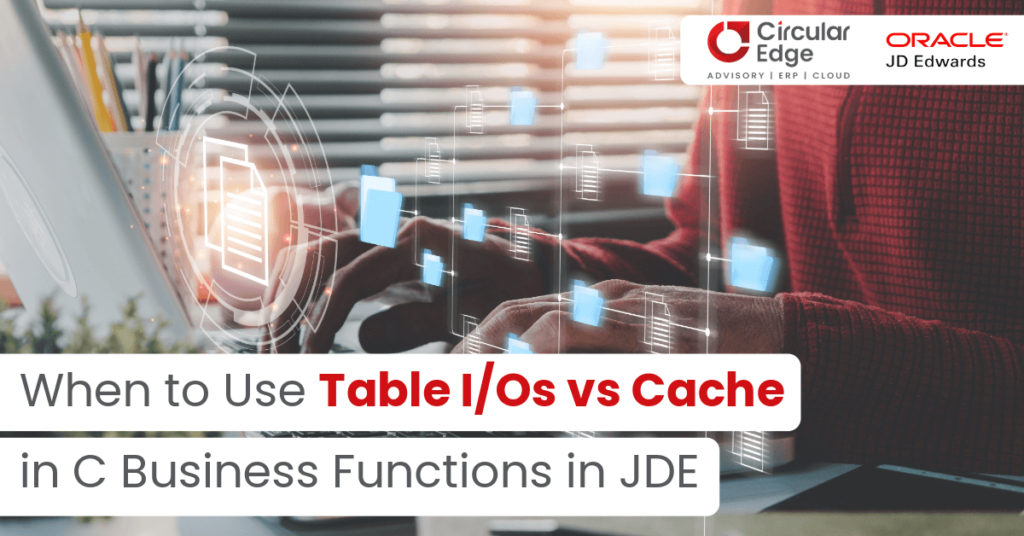In JD Edwards, C business functions, deciding whether to use table I/Os or cache for data access depends on the specific requirements of your application and the performance considerations. Here’s a brief overview of when to use each approach:
1. Table I/Os:
-Use table I/Os when you need to access data from the database and have real-time data requirements.
-Table I/Os directly interact with the database tables, fetching data when needed.
-This approach ensures you get the latest data from the database.
-Table I/Os are suitable when dealing with small data sets or when caching data might consume more memory than necessary.
2. Cache:
-Use cache when you need to frequently access the same data, and real-time data is not strictly required.
-Caching data can significantly improve performance by reducing the number of database hits.
-Data that doesn’t change frequently or is shared across multiple users can be good candidates for caching.
-Cache can be especially beneficial for data that requires complex processing, as it eliminates the need to repeat the same calculations on each access.
-JDE provides the Cache Manager to manage caching. You can define and control the caching behavior for specific data through cache management.
When deciding between table I/Os and cache, consider the following factors:
- Data Volatility- If the data frequently changes or needs to be up to date at all times, table I/Os might be a better choice to ensure real-time data accuracy.
- Data Size- If the dataset is relatively small and can be managed in memory without causing memory issues, using table I/Os might be acceptable. However, for larger datasets, caching can help improve performance significantly.
- Data Usage Patterns- Analyze how frequently the data is accessed and if there are any repetitive or redundant data requests. Frequent and repetitive access to the same data suggests caching may be beneficial.
- Data Processing Complexity- If the data requires complex calculations or joins with other tables, caching the results of these calculations can significantly improve the overall performance.
- Concurrency- Consider how multiple users accessing the same data simultaneously might affect the system. Caching can help reduce the load on the database in situations with high concurrency.
- Resource Utilization- Evaluate the system resources available. Caching data consumes memory, so ensure that caching won’t lead to memory constraints.
Ultimately, the decision to use table I/Os or cache depends on striking a balance between real- time data requirements and performance optimization. In many cases, a combination of both approaches may be the most appropriate solution, using cache for frequently accessed data and table I/Os for real-time updates or when the cache needs to be refreshed. Properly optimizing data access methods can lead to significant improvements in JDE application performance and user experience.


